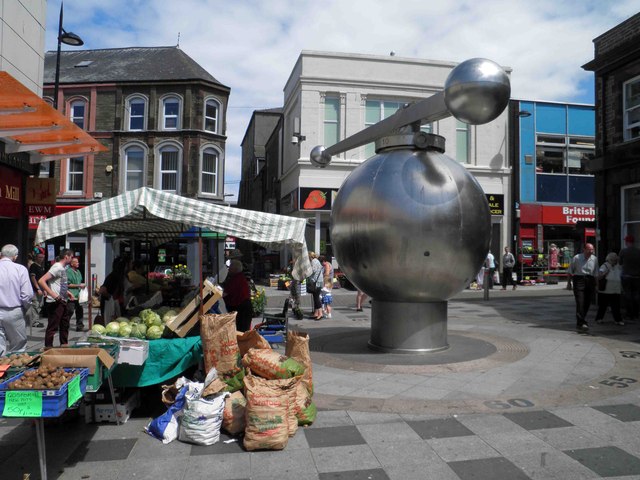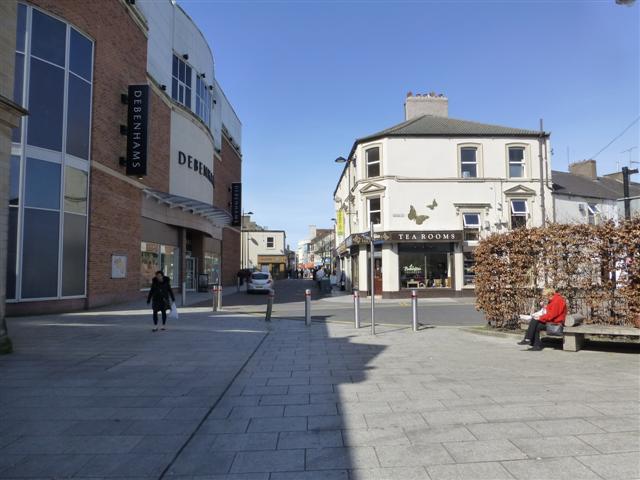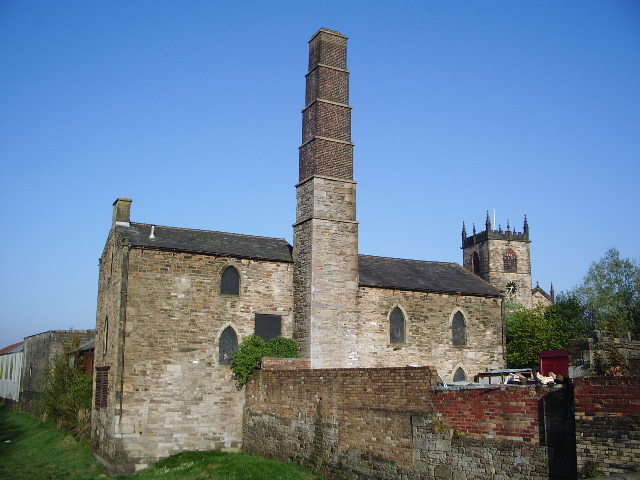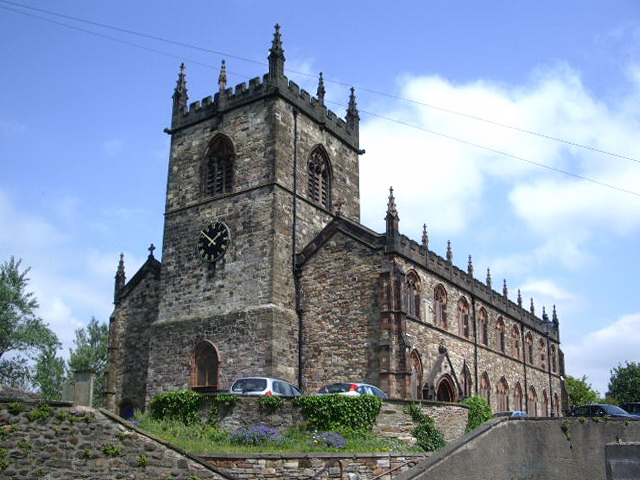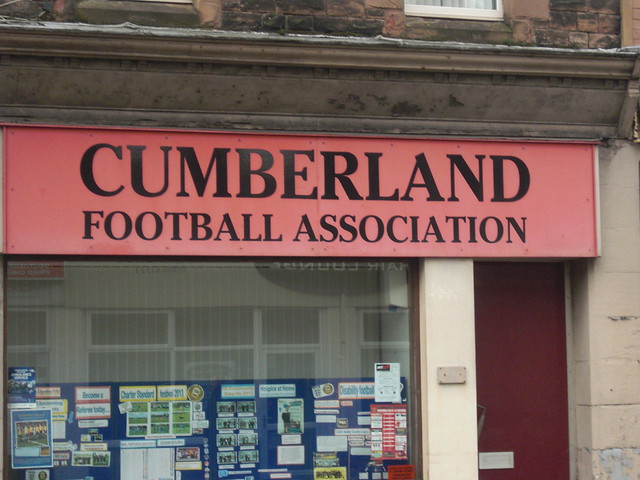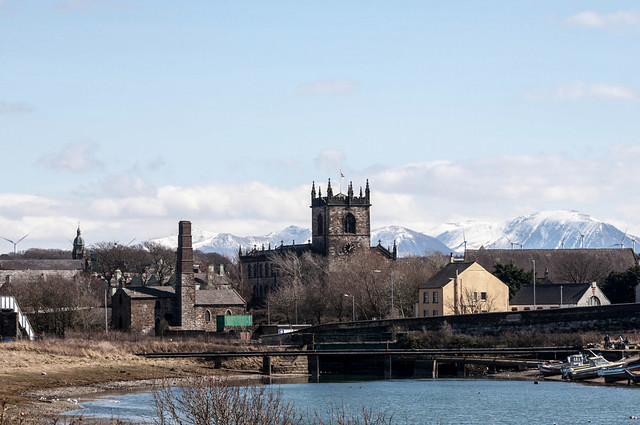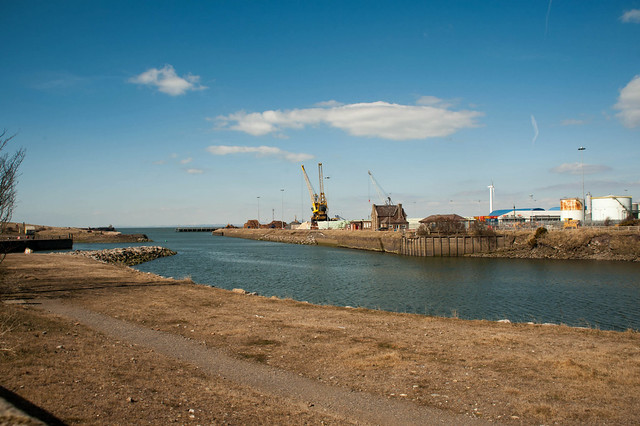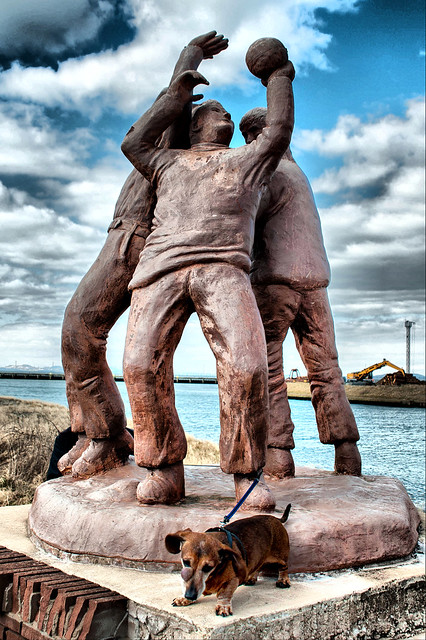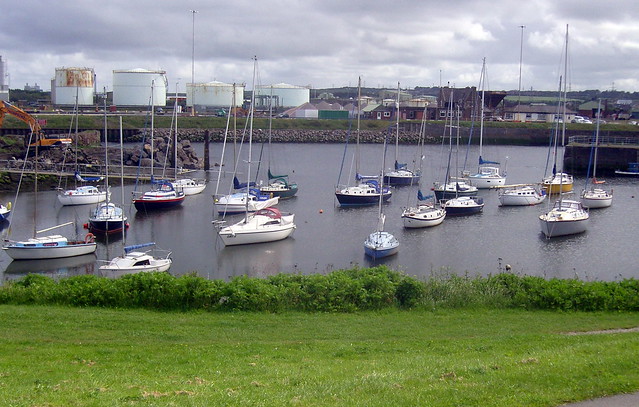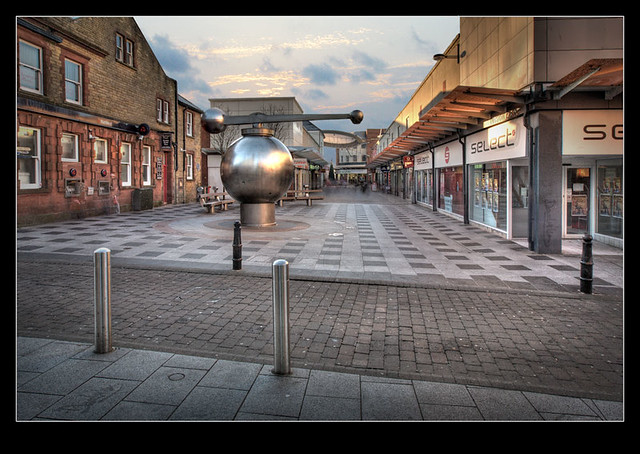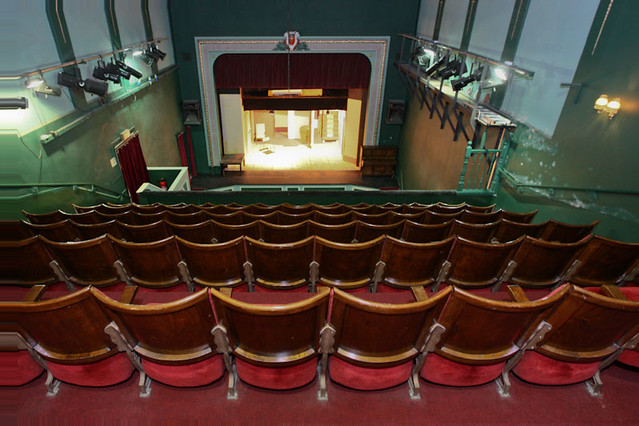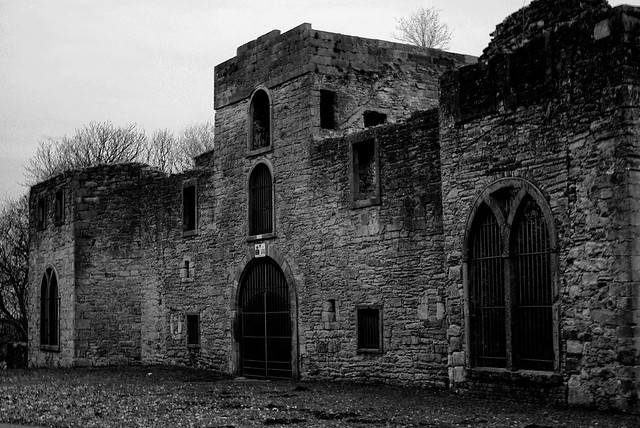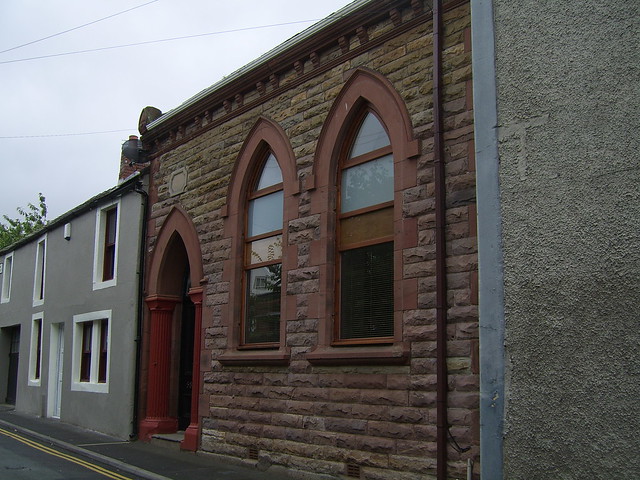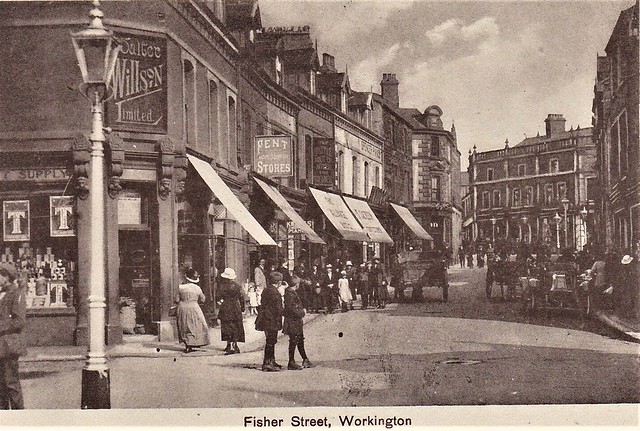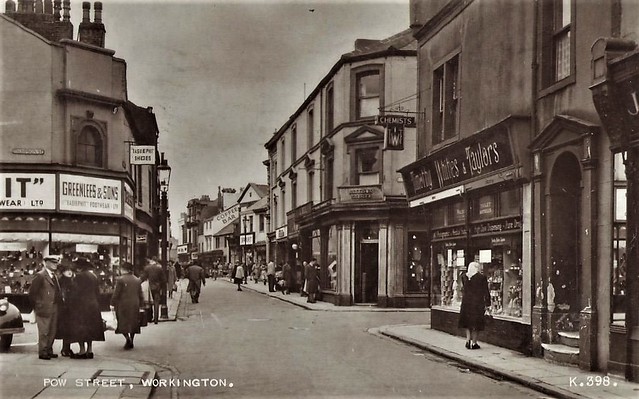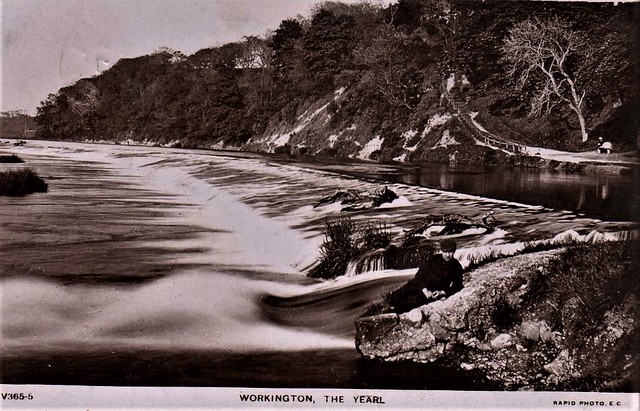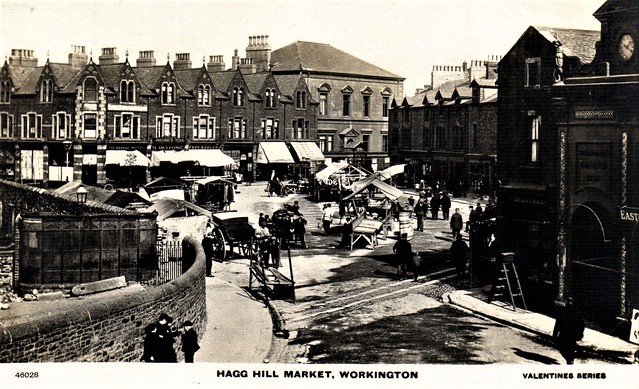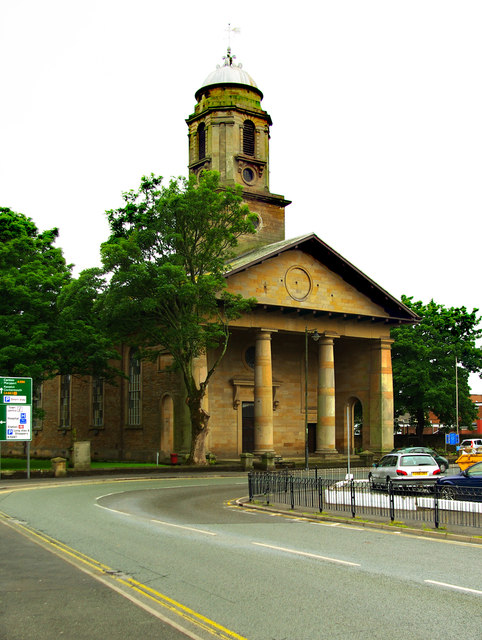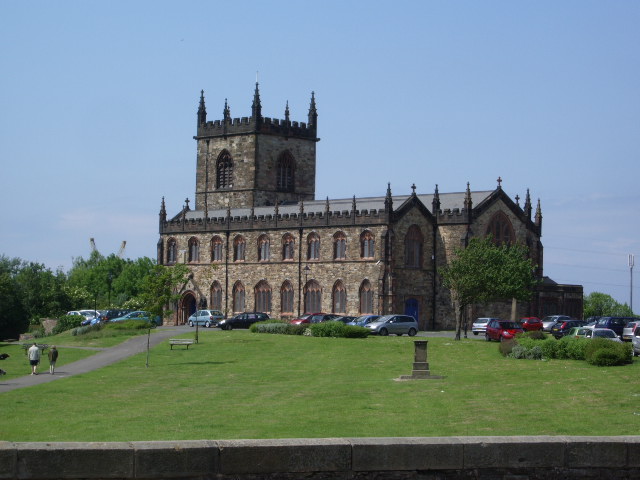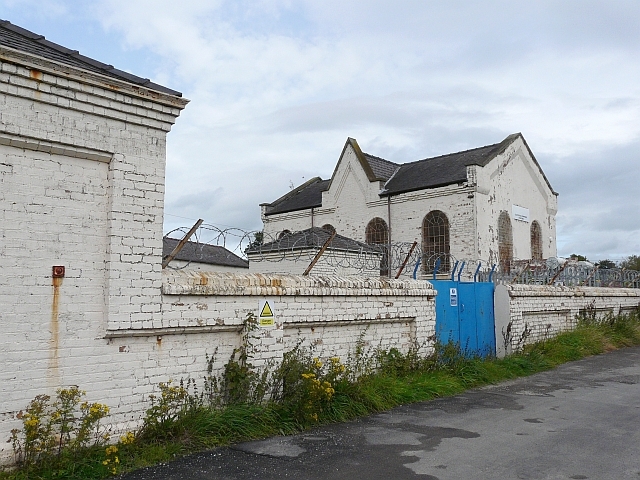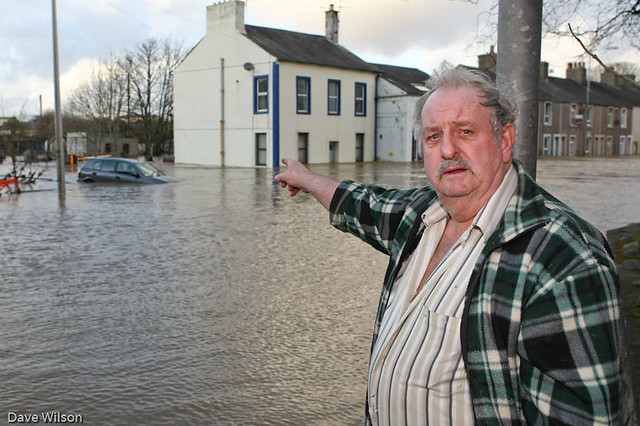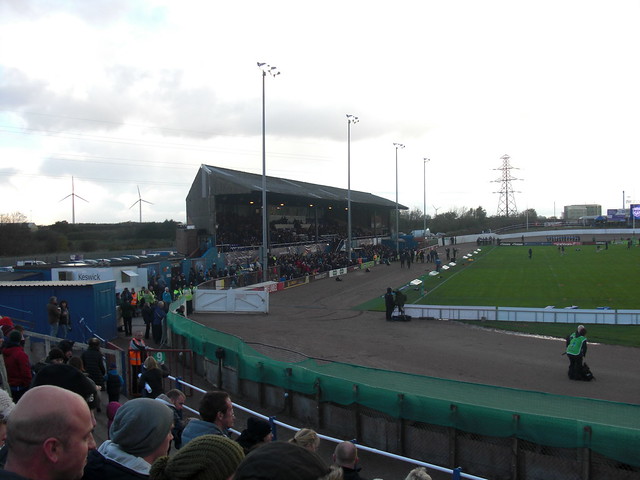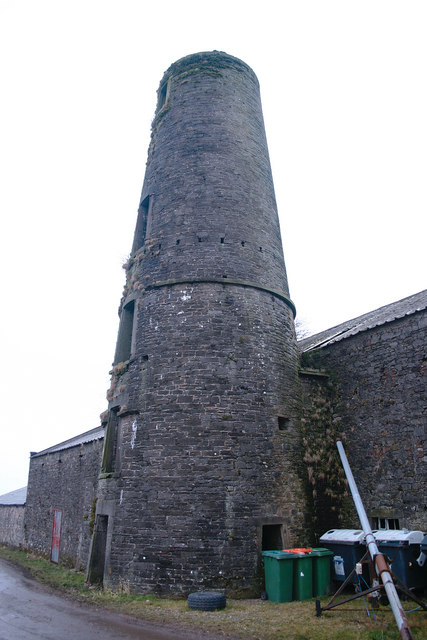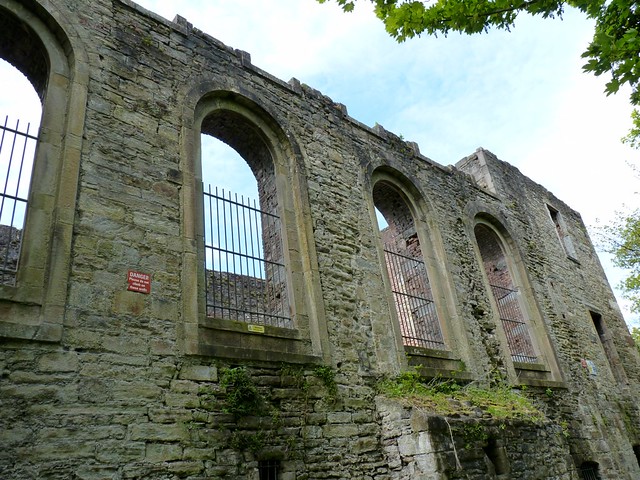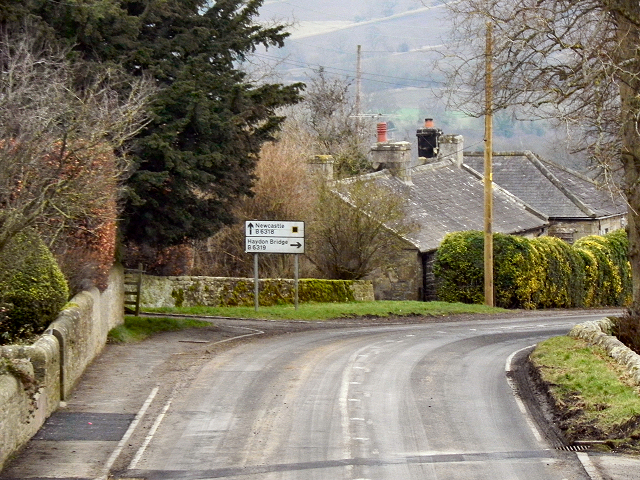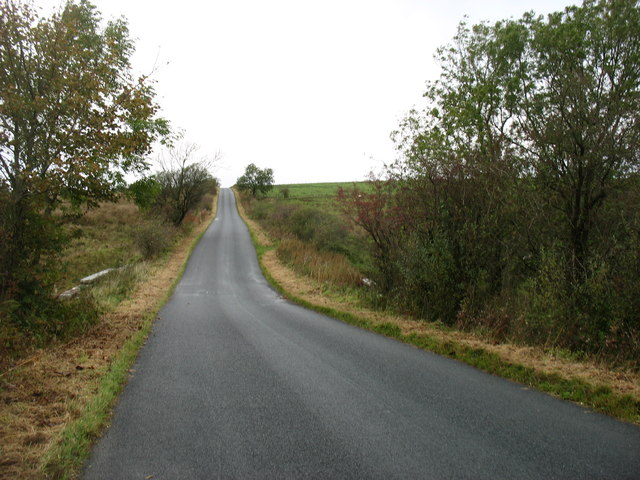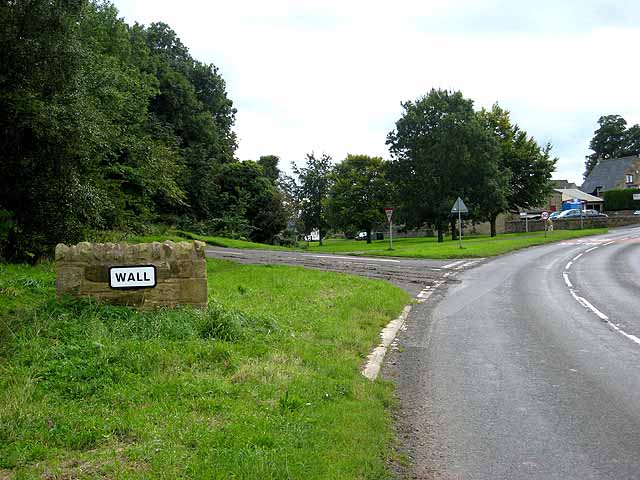Workington
Workington is a town and civil parish at the mouth of the River Derwent on the west coast of Cumbria, England. Historically in Cumberland and lying in the Borough of Allerdale, Workington is 32 miles (51.5 km) southwest of Carlisle, 7 miles (11.3 km) west of Cockermouth, and 5 miles (8.0 km) southwest of Maryport. At the 2011 Census it had a population of 25,207.
Workington is the seat of Allerdale Borough Council. Sue Hayman is the MP for the constituency of the same name that includes other towns in Workington's hinterland.
History
The area around Workington has long been a producer of coal and steel.
Between AD 79 and AD 122, Roman forts, mile-forts and watchtowers were established along the Cumbrian coast. They were coastal defences against attacks by the Scoti from Ireland and by the Caledonii, the most powerful tribe in what is now Scotland. The 16th-century Britannia, written by William Camden describes ruins of the coastal defences at Workington.
A Viking sword was discovered at Northside, which is believed to indicate that there was a settlement at the river's mouth.
In 2009 several bridges were damaged or destroyed by the River Derwent during the 2009 floods
Early 2000s regeneration
In 2006, Washington Square, a £50 million shopping centre and mixed use complex, was opened to replace the run down St John's Arcade, built in the 1960s and 1970s. In 2007, the Royal Institution of Chartered Surveyors named Washington Square as the 'best commercial project' in North West England.
Several works of public art were installed in the town centre, including:
While successful efforts have been made to find appropriate local names for the major streets of the new shopping centre, the initial planning title of Washington Square has been retained; there is concern over the use of the word Washington, an Anglo-Saxon word meaning the settlement of the people of 'Wash' for the new square in Workington, which means settlement of the people of 'Weorc'.
Cloffocks Field Tesco development controversy
A plan to build a Tesco Extra store on the Cloffocks proved controversial with much opposition from local people; a planning application was placed in 2006 by Tesco, after it acquired the Cloffocks site for £18 million; Tesco had been competing with Asda to acquire the site since 2003. Campaigners opposed the sale, stating that the land was common ground and belonged to the people of Workington, in 2010 the Countess of Lonsdale invoked her rights to mine the land, in an attempt to prevent the development. In 2011 a closed meeting of Allerdale councillors took place to discuss the sale of the site, the council rescinded on its decision to sell the site to Tesco in June 2011. Tesco stated that they were still seeking a site for a store of around in Workington to replace the established store.
Geography
Workington lies astride the River Derwent, on the West Cumbrian coastal plain. It is bounded to the west by the Solway Firth, part of the Irish Sea, and by the Lake District fells to the east.
The town comprises various districts, many of which were established as housing estates. North of the river these districts include Seaton, Barepot, Northside, Port and Oldside. On the south side are the districts of Stainburn, Derwent Howe, Ashfield, Banklands, Frostoms (Annie Pit), Mossbay, Moorclose, Salterbeck, Bridgefoot, Lillyhall, Harrington, High Harrington, Clay Flatts, Kerry Park, Westfield and Great Clifton. The Marsh and Quay, a large working class area of the town around the docks and a major part of the town's history, was demolished in the early 1980s. Much of the former area of the Marsh is now covered by Clay Flatts Industrial Estate.
Economy
Iron and steel
The Cumbria iron ore field lies to the south of Workington, and produced extremely high grade phosphorus-free haematite. The area had a long tradition of iron smelting, but this became particularly important with the invention by Sir Henry Bessemer of the Bessemer process, the first process for mass production of mild steel, which previously had been an expensive specialist product. For the first 25 years of the process, until Gilchrist and Thomas improved upon it, phosphorus-free haematite was required. With Cumbria as the world's premier source, and the local coalfield providing energy for steel production, the world's first large-scale steelworks was opened in the Moss Bay area of the town. The Bessemer converter continued to work until July 1974. The Moss Bay Steelworks closed in 1982, despite having received significant infrastructural investment and improvements almost immediately prior to the closure.
During the Second World War, a strategically important electric steel furnace which produced steel for aircraft engine ball bearings was moved to Workington from Norway to prevent it falling into Axis hands.
Workington was the home of Distington Engineering Company (DEC), the engineering arm of British Steel Corporation (BSC), which specialised in the design of continuous casting equipment. DEC, known to the local people as "Chapel Bank", had an engineering design office, engineering workshops and a foundry that at one time contained six of the seven electric arc furnaces built in Workington. The seventh was situated at the Moss Bay plant of BSC. In the 1970s, as BSC adapted to a more streamlined approach to the metals industry, the engineering design company was separated from the workshops and foundry and re-designated as Distington Engineering Contracting. Employing some 200 people, its primary purpose was the design, manufacture, installation and commissioning of continuous casting machines. This business is now owned by the TATA Group and employs 400 staff.
One offshoot of the steel industry was the production of steel railway rails. Workington rails were widely exported and a common local phrase was that Workington rails 'held the world together'. Originally made from Bessemer steel, following the closure of the Moss Bay Steelworks, steel for the plant was brought by rail from Teesside. The plant was closed in August 2006. However welding work on rails produced at Corus Groups' French plant in Hayange continued at Workington for another two years, as the Scunthorpe site initially proved incapable of producing rails adequately.
After coal and steel
After the loss of the two industries on which Workington was built, coal and steel, Workington and the whole of West Cumbria became an unemployment blackspot. Industries in the town today include chemicals, cardboard, the docks (originally built by the United Steel Co.), waste management and recycling old computers for export, mainly to poorer countries. The town also houses the British Cattle Movement Service, a government agency set up to oversee the British beef and dairy industry following the BSE crisis in Britain; it is located in former steelworks offices. Many Workington residents are employed outside the town in the nuclear industry located in and around Sellafield, West Cumbria's dominant employment sector.
Vehicle manufacture
Workington manufactured 'Pacer' railbus and 'Sprinter' type commuter trains and Leyland National buses. The Leyland National was based on an Italian design, which included an air conditioning unit, roof mounted in a pod at the rear of the bus. The bodyshells of the 'Pacer' trains were based on the National bus design, designed as a cheap stopgap by British Rail. This initiative led to Workington's brief history of train manufacturing; the trains were generally considered to be badly designed, and uncomfortable to ride with a tendency to jump about much more than most trains, as they are not equipped with proper train bogies, but have two single axles per carriage, a cost-cutting design feature which also caused problems with tight-radius corners on some lines. Some industry experts have also questioned their safety compared to other commuter train types, such as the Sprinter.
Volvo Buses bought out Leyland Buses in 1990 and by 1993, the factory had closed with the loss of 200 jobs.
The former bus plant, located in Lillyhall, just outside of Workington, is now a warehouse for the logistics company Eddie Stobart, who bought the then derelict factory in 1995.
Transport
Workington is linked by the A596 road to Maryport, to Whitehaven via A595 road, by the A66 road to Penrith and continues to Scotch Corner in County Durham. The town has bus connections to other towns and villages in Cumbria, such as Cockermouth, Keswick, Penrith, Carlisle, Wigton, Maryport, Whitehaven, Frizington, Egremont and Thornhill.
The Cumbrian Coast Line provides rail connections from Workington railway station to Carlisle and Barrow-in-Furness, with occasional through trains to Lancaster and Preston.
Workington North railway station opened on 30 November 2009 as a temporary means of crossing the river following the closure of road bridges due to flooding. A free train service operated between Workington (Main) and Maryport and was funded by the British Government.
The Workington Transport Heritage Trust (http://wtht.co.uk/), preserves the transport heritage of Workington and the surrounding area and is run by volunteers.
Workington was the headquarters of the haulage company J Roper (Workington) Ltd who were based in Moss Bay.
Arts and entertainment
Workington is home to three theatres. The Carnegie Theatre, Theatre Royal and the Workington Opera House. In the past Workington was a big town for variety acts and theatre and hosted many top acts including Tommy Cooper and Shirley Bassey. Workington Opera House has also hosted many circus shows which included elephants and other circus animals performing on stage.
The Carnegie Theatre and Theatre Royal are still open and put on performances all year round. The Workington Opera House is currently closed after its last use as a bingo hall. The "Opera Action" group plan to restore the Workington Opera House into a working theatre.
The town once had four cinemas (the Carnegie; the Hippodrome; the Oxford; and the Ritz), all of which have now closed and have been replaced with the Plaza Cinema at Dunmail Park. During the 1950s, films were also shown at the Opera House.
Cultural festivals
On 19 September 2009, Valentine Rock took place; a 19 band charity music festival. It was staged at the Ernest Valentine Ground home of Workington Cricket Club. Artists include: The Chairmen, Novellos, With Lights Out, Volcanoes, Breed, Colt 45, Relics, Telf, Thir13een, Slagbank, Hangin' Threads and Hand of Fate. Profits went to the RNLI and West Cumberland Lions.
In 2008, the Paint Your Town Red Festival invited Liverpool comic and actor Ricky Tomlinson. Described as 'The biggest free festival in Workington's history', the 2008 festival included a free children's fun fair in Vulcan Park and stage and street entertainnment. Attractions included "Jimmy James and his Soul Explosion", "Dearham Band" and the all-girl band "Irresistible". Keswick's "Cars of the Stars" museum provided a stunt driving display.
Sport
Uppies and Downies
Workington is home to the ball game known as Uppies and Downies, a traditional version of football, with its origins in medieval football, mob football or an even earlier form. Since 2001, the matches have raised over £75,000 for local charities. An Uppies and Downies ball is made from four pieces of cow leather. It is in circumference and weighs about . Only three hand-made balls are produced every year and each is dated.
Football
The town has a football team, Workington A.F.C., with their stadium at Borough Park, formerly a professional football team it now competes as non-League club. Dronnies formed the nucleus of the original Workington F.C. in 1888.
Workington A.F.C. were replaced in the football league by Wimbledon F.C. and were one of the first teams managed by Bill Shankly.
Rugby (League and Union)
The town has a professional rugby league team: Workington Town located at Derwent Park stadium.
Workington is the home to the rugby union team Workington Zebras, who play on their matches on the Ellis Sports Ground.
Bowling
There are two bowling greens in the town, one in Vulcan Park and another on High Cloffocks, south of the River Derwent. Teams and individuals from both greens compete in local, regional and national competitions.
Golf
Workington's first golf club was formed in 1893 and played north of the River Derwent near Siddick. Known as West Cumberland Golf Club, it used this nine-hole course until the First World War when it closed. After the war the club reformed as Workington Golf Club and moved to the present Hunday Wood location. Five-times Open Champion and renowned course architect James Braid was consulted on the layout. Considered 'one of the premier courses in Cumbria' it has been influenced by FG Hawtree during the 1950s and by Howard Swan today.
Speedway
Workington Comets are the town's professional speedway team, which competes in the British Speedway Premier League.
Before World War II racing was staged at Lonsdale Park, which was next to Borough Park, on the banks of the River Derwent. The sport did not return to the town until 1970, when it was introduced to Derwent Park by local entrepreneur Paul Sharp and Ian Thomas who is the present team manager (2009). In 1987, Derwent Park was a temporary home to the Glasgow Tigers who briefly became the Workington Tigers prior to their withdrawal from the league. Speedway returned to Workington and the team has operated with varying degrees of success, but in 2008, they won the Young Shield and the Premier League Four-Team and Pairs Championships. An Academy team under the banner of Northside Stars, develops young riders who show potential at the Northside training track and may make future first teams.
Cricket
Workington Cricket Club's home is the Ernest Valentine Ground, on the High Cloffock near the River Derwent and the town centre. It is a thriving club with 3 senior teams and a growing junior section putting out 6 teams. It is affiliated to Cumbria Cricket League, Cumbria Cricket Board, Cumbria Junior Cricket League and the West Allerdale & Copeland Cricket Association. Coaches lead Cumbria Cricket Board Open Courses at the town's Stainburn School, which are open to Years 4, 5, 6, 7, 8, 9 & 10 pupils.
Angling
Workington and District Sea Angling Club takes part in regular monthly matches. It meets every month in the Union Jack Club, Senhouse Street, Workington. It also arranges tuition for its anglers. Freshwater anglers are active on local rivers, especially the River Derwent.
Athletics
Workington has opportunities for track and field, triathlon, road running, cross-country, fell running and orienteering. All of its schools and clubs are affiliated to the Cumbria Athletics Association, except orienteering which is organised through its own national federation. Athletes tend to join clubs which concentrate on their particular discipline. Cumberland Fell Runners; Cumberland Athletics Club; Derwent and West Cumberland AC; Seaton Athletics Club; Workington Zebras AC and West Cumberland Orienteering Club are the most popular at present.
Primary schools have a well organised inter-school programme. Secondary schools focus especially on the Allerdale District School's Championships, which lead on to the Cumbria Schools Championships. The results of Cumbria's championships guide selection of the county teams to compete in the English Schools Athletic Association Championships. Over the years, Workington athletes have earned English Schools Championship honours.
Motorbike road riding
There is a Cumbria Coalition of Motorcycle Clubs. The West Cumbrian motorcycle club, the Roadburners. was established in 1989 and regularly attends local and national motorbike rallies, and charity road runs. It welcomes new members interested in multi cylinder machines. The National Chopper Club also has local members.
Notable residents
- Jim Brough, rugby union and rugby league English international player.
- Dale Norman Campbell-Savours, Labour politician and Member of Parliament (MP) for Workington from 1979 to 2001, Baron Campbell-Savours now sits in the House of Lords. Prior to becoming an MP he was the managing director of a watch making business.
- Thomas Cape MBE (1868–1947), Labour politician and Member of Parliament (MP) for Workington from 1918 to 1945.
- Mark Cueto, English international rugby union player.
- Sir Thomas Anthony Cunningham (born 16 September 1952), known as Tony Cunningham, is a British Labour Party politician who was the Member of Parliament (MP) for Workington from 2001 to 2015.
- Paul Dale, the first CTO to be appointed to the management board at ITV plc, the largest commercial television network in the UK.
- Scott Dobie, Carlisle United and Scotland international footballer.
- Troy Donockley, Workington-born player of uilleann pipes and member of Nightwish.
- Sir Joseph Brian Donnelly KCMG, KBE, CMG (diplomat)—son of Workington steelworker, educated at Workington Grammar School and Oxford University.
- Kathleen Ferrier CBE (1912–1953), Won the prestigious Gold Cup at the 1938 Workington Musical Festival.
- Arthur Guirdham, a physician, psychiatrist, novelist, and writer on the Cathar sect, alternative medicine, ESP and reincarnation.
- Fred Peart, Member of Parliament for Workington from 1945 to 1976. Peart was made a life peer in 1976, and served as Leader of the House of Lords and Lord Privy Seal.
- Gordon Preston, mathematician.
- Bill Shankly, former manager of Workington A.F.C
- James Alexander Smith VC (1881–1968), Workington-born soldier of the 3rd Battalion, Border Regiment during World War I.
- Alan Tarney, songwriter, producer
- Julie Ward, MEP for North West England
Twin towns
- Germany Selm, Germany
- France Val-de-Reuil, France
- Germany Bad Belzig, Germany
Visit the page: Workington for references and further details. You can contribute to this article on Wikipedia.
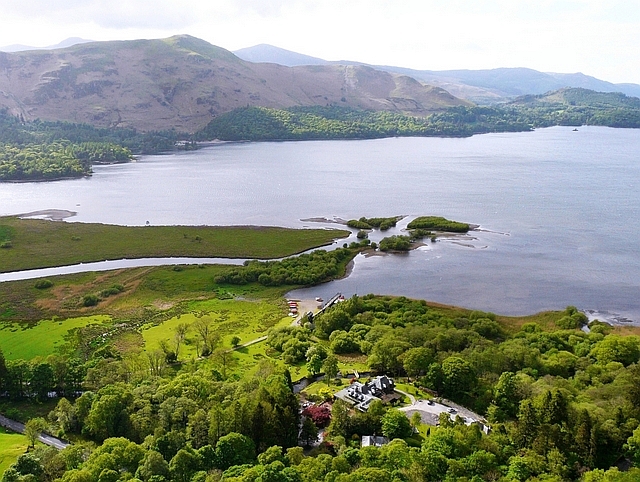
Co-Curate Page
River Derwent (Cumbria)
- Overview About the River Derwent The River Derwent is a major river in Cumbria. It is formed by the confluence of Styhead Gill and Grains Gill at the southern end …

from Flickr (flickr)
Cumbria; Bankfield, Workington PPC 1918 PMK, Message Re Military Hospital
Pinned by Peter Smith
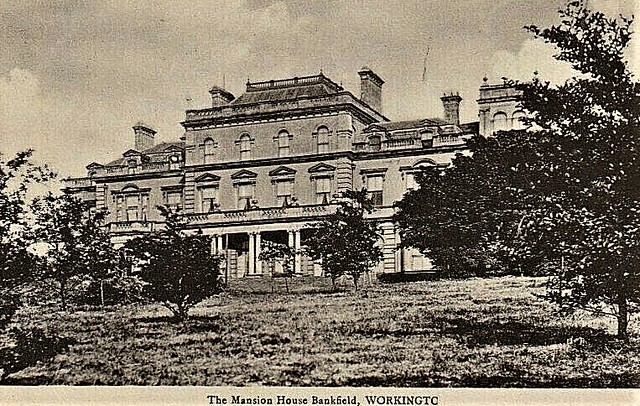
from Flickr (flickr)
Early WORKINGTON - Bankfield Mansion House, now demolished
Pinned by Peter Smith
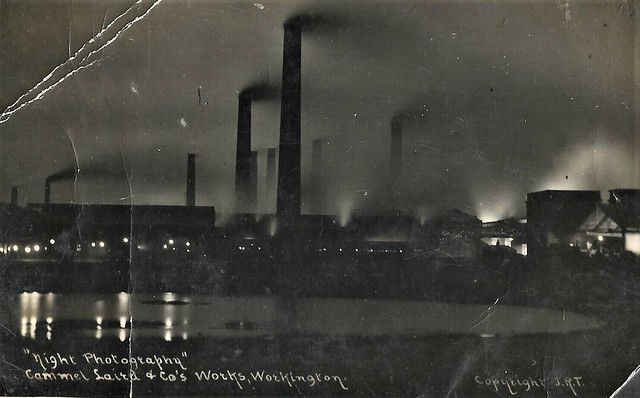
from Flickr (flickr)
RP Postcard - Cammel Laird Works, Workington, Cumberland.
Pinned by Peter Smith
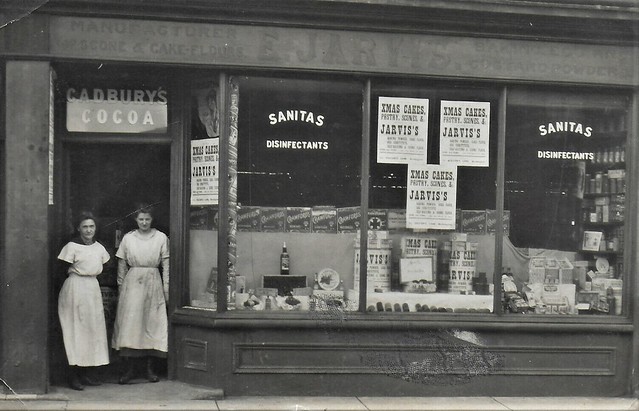
from Flickr (flickr)
SUPERB GENUINE RARE VINTAGE POSTCARD,SHOP FRONtv.JARVIS,WORKINGTON,CUNBRIA,RP
Pinned by Peter Smith
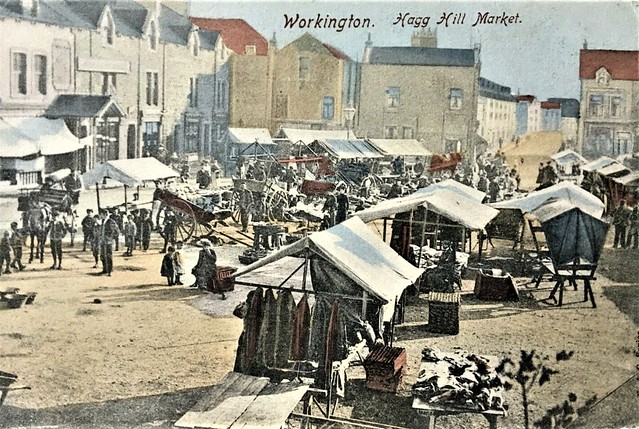
from Flickr (flickr)
WORKINGTON HAGG HILL MARKET - NICE 1904 COLOURED POSTCARD!
Pinned by Peter Smith
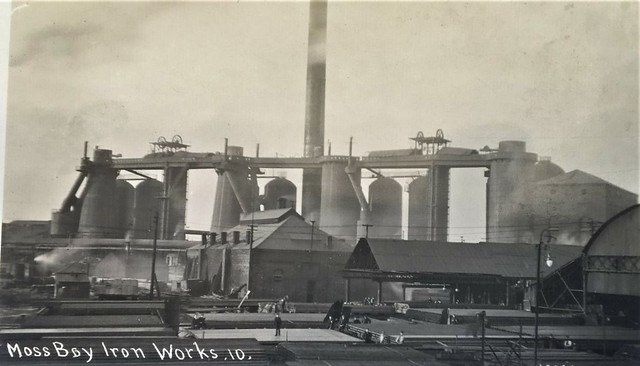
from Flickr (flickr)
WORKINGTON MOSS BAY IRONWORKS - NICE WCL REAL PHOTO POSTCARD!
Pinned by Peter Smith
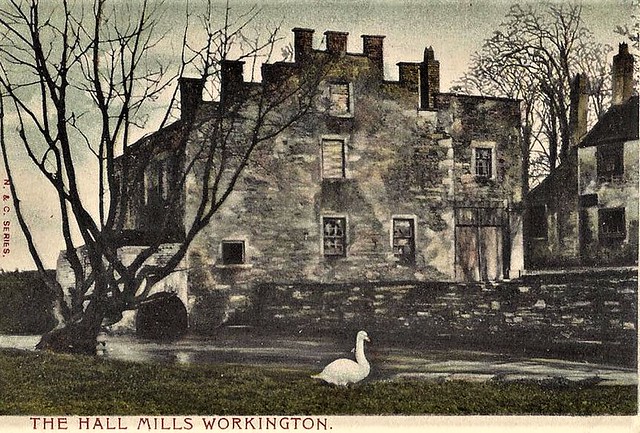
from Flickr (flickr)
WORKINGTON The Hall Mills, Postcard by Nicholson & Cartner, Unused
Pinned by Peter Smith
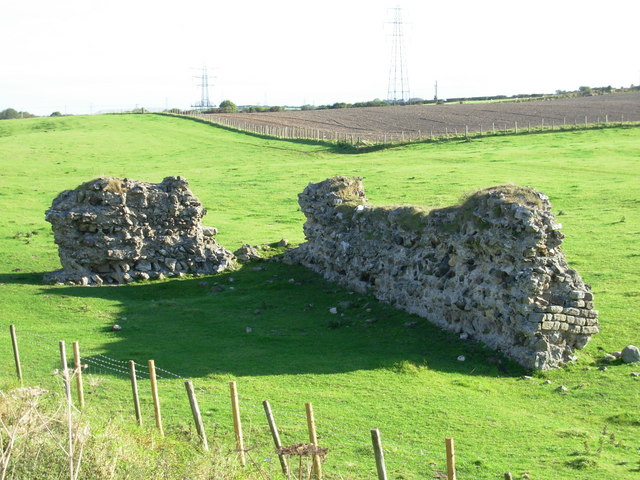
Co-Curate Page
Burrow Walls Roman Fort
- Overview Map Burrow Walls is located between Workington and Seaton in Cumbria. This Scheduled Monument includes the buried remains of a Roman fort and also visible sections of a wall made …


Co-Curate Page
River Derwent (Cumbria)
- Overview About the River Derwent The River Derwent is a major river in Cumbria. It is formed by the confluence of Styhead Gill and Grains Gill at the southern end …

from Flickr (flickr)
Cumbria; Bankfield, Workington PPC 1918 PMK, Message Re Military Hospital
Pinned by Peter Smith

from Flickr (flickr)
Early WORKINGTON - Bankfield Mansion House, now demolished
Pinned by Peter Smith

from Flickr (flickr)
RP Postcard - Cammel Laird Works, Workington, Cumberland.
Pinned by Peter Smith

from Flickr (flickr)
SUPERB GENUINE RARE VINTAGE POSTCARD,SHOP FRONtv.JARVIS,WORKINGTON,CUNBRIA,RP
Pinned by Peter Smith

from Flickr (flickr)
WORKINGTON HAGG HILL MARKET - NICE 1904 COLOURED POSTCARD!
Pinned by Peter Smith

from Flickr (flickr)
WORKINGTON MOSS BAY IRONWORKS - NICE WCL REAL PHOTO POSTCARD!
Pinned by Peter Smith

from Flickr (flickr)
WORKINGTON The Hall Mills, Postcard by Nicholson & Cartner, Unused
Pinned by Peter Smith



